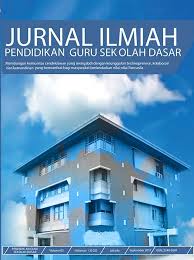PROSES PEMBELAJARAN ONLINE PADA MASA PANDEMI DI SD MUHAMMADIYAH WIROBRAJAN I
Abstract
The purpose of this study is to determine the online learning process and to find out the responses of educators, students, and parents in online learning, and to find out what are the supporting and inhibiting factors in the online learning process. The research method used in this research is the descriptive qualitative method. The subjects in this study were teachers, students, and parents of students. Sources of data used by researchers, namely primary data sources and secondary data sources. The primary data sources are teachers, students, and parents of students. Secondary data is data obtained from literature, articles, journals, and the Internet. Data collection techniques used in this study are observation, interviews, and documentation. After the researcher got the research data, then the data analysis was carried out. The data analysis technique in this study is the analysis technique of Miles and Huberman. The results of this study are the online learning process at SD Muhammadiyah Wirobrajan I Yogyakarta by using WhatsApp groups, zoom meetings, google classroom and google forms as online learning media. The responses of teachers, students, and parents about the online learning process are that they respond to this online learning well and wisely but they hope to do face-to-face learning soon. The supporting and inhibiting factors in online learning are the existence of good cooperation between teachers and parents of students, and the existence of mobile phones, quotas, and internet networks as supporting tools for the implementation of the online learning process. And the inhibiting factor is that not all students have personal cell phones, students are lazy to take online learning, run out of quota or lose signal.
Keywords
Full Text:
PDFReferences
Ayuni, D., Marini, T., Fauziddin, M., & Pahrul, Y. (2020). Kesiapan Guru TK Menghadapi Pembelajaran Daring Masa Pandemi Covid-19. Jurnal Obsesi : Jurnal Pendidikan Anak Usia Dini, 5(1), 414. https://doi.org/10.31004/obsesi.v5i1.579
Cahyati, N., & Kusumah, R. (2020). Peran Orang Tua Dalam Menerapkan Pembelajaran Di Rumah Saat Pandemi Covid 19. Jurnal Golden Age, 4(01), 4–6. https://doi.org/10.29408/jga.v4i01.2203
Creswell, J. W. (2016). Reseach Design: Pendekatan Metode Kualitatif, Kuantitatif dan Campuran (Ke-3). Pustaka Pelajar.
Hattie, J. (2009). Visible learning: A synthesis of meta-analyses in education. Routledge.
Monica, J., & Fitriawati, D. (2020). Efektivitas Penggunaan Aplikasi Zoom Sebagai Media Pembelajaran Online Pada Mahasiswa Saat Pandemi Covid-19. Jurnal Communio : Jurnal Jurusan Ilmu Komunikasi, 9(2), 1630–1640. https://doi.org/10.35508/jikom.v9i2.2416
Naserly, M. K. (2020). Implementasi Zoom, Google Classroom, Dan Whatsapp Group Dalam Mendukung Pembelajaran Daring (Online) Pada Mata Kuliah Bahasa Inggris Lanjut. Journal of Chemical Information and Modeling, 4(2), 155–165. https://jurnal-dikpora.jogjaprov.go.id/index.php/jurnalideguru/article/view/129
Sudrajat, J. (2020). Kompetensi Guru Di Masa Pandemi Covid-19. Jurnal Riset Ekonomi Dan Bisnis, 13(1), 100–110.
Sugiyono. (2019). Metode Penelitian Kuantitatif Kualitatif dan R&D (Kedua). Alfabeta.
Sutia, C., & Sagita, S. (2020). Tanggapan Siswa , Orang Tua dan Guru terhadap Pembelajaran Jarak Jauh Selama Pandemi Covid-19 Students , Parents and Teachers ’ Responses to Distance Learning During The Covid-19 Pandemic. Jurnal Inspirasi, 19(2), 156–165.
Zulkanain, Nani Amalina, S. M., & Abdullah, and N. S. (2020). An Adapted Pedagogical Framework in Utilizing WhatsApp for Learning Purpose. Education and Information Technologies, 25(4):2811. https://doi.org/10.1007/s10639-019-10096-0.
DOI: https://doi.org/10.31326/jipgsd.v6i2.1468
Refbacks
- There are currently no refbacks.

This work is licensed under a Creative Commons Attribution-ShareAlike 4.0 International License.





